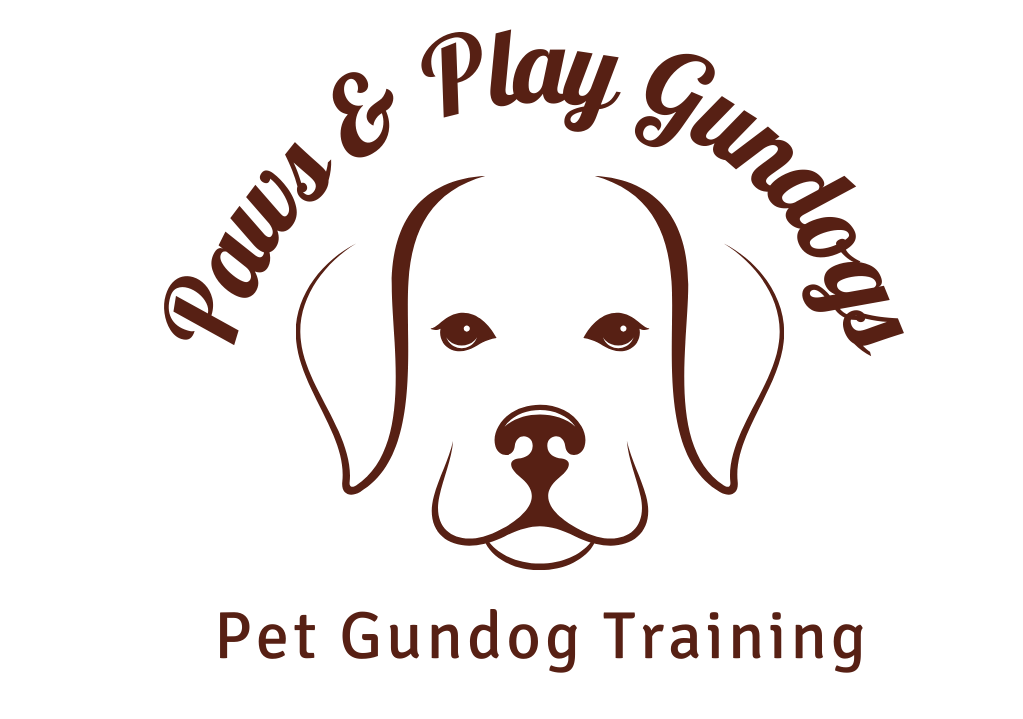Grade 4 Assessment Requirements
For those wishing to go ahead with their Grade 4 Assessment there is a fee of £55
Retriever
PART 1: MARKED RETRIEVES:
LONG MARK:
A test of the dog's ability to mark at distance - single mark at 80-100 yards in light cover.
MARK ACROSS WATER:
A test of the dog's ability to enter water, then re-enter and swim while carrying a retrieve.
A single short mark to fall a maximum of
40 yards distant from the dog, on the other side of a small area of water. The dog must swim and retrieve from the far shore.
The mark to be 5-10 yards from the water’s edge, and the dog to be sent from at least 5 yards from the water’s edge on the opposite bank. The swim need not be more than a few metres, but the dog must swim.
DOUBLE MARK:
Two marks to be thrown. One a short mark (40 yards) into heavy cover, the other a longer mark (70 yards) into lighter cover. minimum of 90 degrees between the two. Dog to be sent for each mark in turn, after both have been thrown. Once both marks have been thrown, the assessor will direct the handler to send the dog to the mark chosen by the assessor. On the dog’s return, the handler will then send them for the second mark.
PART2: BLIND RETREIVES:
LONG BLIND: A single dummy at 60 yards.
SHORT BLIND WITH DISTRACTION: Dog to be sent for a single dummy at around 30 yards distant. A second distraction mark to the thrown at a minimum of 90 degrees. Only the blind is to be picked, not the distraction.
HUNT AN AREA: Three dummies to be dropped in advance in deep cover at 20 yards. Dog to find two of them. Maximum time allowed, 5 minutes. Area to be marked for the handler’s benefit by a flag or pole.
Hunting Retriever (Spaniels)
The emphasis at this grade is on proficiency both in hunting, and in retrieving dummies.
The Grade Four test is a ‘hunt up’ during which the dog will be required to demonstrate hunting and retrieving skills, followed by a section for the remaining two retrieves
THE HUNT UP - Part 1
The dog to hunt closely in front of the handler through moderate cover The dog must show efficient coverage of the ground and make some effort to keep within his beat, with the turn whistle not to be used excessively
HUNTING ABILITY: T he natural ability of the dog, his enthusiam, style and effective coverage of the ground is recorded in this section .
HUNTING TEAMWORK: The responsiveness of the dog to the handler, and the ability of the handler to quietly control the dog is recorded in this section. Response to the whistle and to shot and fall noted.
MARKED RETRIEVES: During the hunt up, the dog will be expected to carry out two marked retrieves (maximum distance 25 and 40 yards respectively. The dog will be cast remotely from the stop.
PART 2:
The dog will carry out the following two additional retrieves
BLIND RETRIEVE: A short blind retrieve (up to 20 yards) the dog to be sent from the handler’s side.
MARKED RETRIEVE OVER A JUMP : Length of retrieve – up to 25 yards. Maximum height of jump ‘two feet’. The dog to be sent from the handler’s side.
HPRs
Hunting:
The dog is to hunt in front of the handler for approx. 10 minutes. No verbal cues are permitted. use of the turn whistle must not be excessive and must be appropriate.
During the hunting, the following are evaluated:
- Stop to Whistle - The handler is required to sit the dog to the whistle - a dummy is thrown on land 40 yards from the dog. Dog to be cast from where he has stopped.
- Stop to fall and shot - A dummy is thrown and a shot is then fired - the dog is to stop to the fall and shot. Dummy to land 40 yards from the dog. Remote cast from where dog has stopped,
- End of hunting and recall - the dog is to be recalled by the handler at the end of the hunt up.
Pointing:
The dog is to point the game for at least 3 seconds - the dog may stalk the game but must be static for 3 seconds during the encounter. The assessor will cue to the handler to give their flush cue. The dog may give a short chase, but then must be able to be recalled off the chase before 50 yards is reached.
Retrieving:
- Mark across water: a single short mark with shot to fall a max of 40 ayrds from the dog, on the other side of a small area of water. The dog must swim back with the retrieve. The dummy and the handler must be at least 5 yards from the water edge on either side.
- Left or right blind with a distraction mark: Dog to be sent for a single dummy at around 30 yards. A second distraction mark to the thrown at a min of 90 degrees before the dog is sent for the blind.
- Hunt an Area: 3 dummies are to be dropped in advance in an area of deep cover 20 yards from the handler. A single shot is fired - the dog must then find at least 2 dummies within 5 minutes.
- Blind 'back' cast: Single blind 'back' at 30 yards behind the dog. The handler is to give instructions from 20 yards from the dog.

